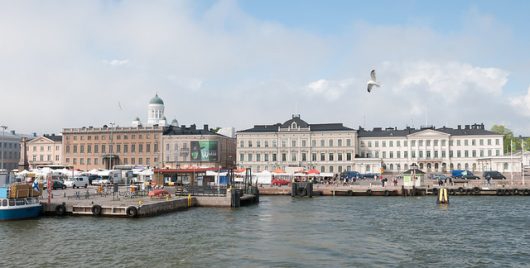A Nation’s Struggle: The Main Causes of Poverty in Finland

Finland is rated among the top nations in the world for quality of life, financial equality and educational systems. As a welfare state, it provides its citizens with public services to protect against financial and social risks like accidents, disabilities, old age and unemployment. Thus, there are few causes of poverty in Finland.
The country also has one of the lowest poverty rates at approximately 0.04% of its 5.4 million citizens. However, the percentage of people considered at risk of poverty is on the rise.
In the late 1980s, Finland had an impressively low unemployment rate of 3.5%, with 10.7% of the population considered at risk of poverty.
In the early 1990s, Finland suffered a severe recession that brought the unemployment rate to 18.5%. This subsequently dropped to 9.1% by the late 1990s as the nation made a quick recovery.
The Finnish government made significant spending cuts for public services to cope with the recession. York University graduate scholar Juha Mikkonen wrote that increases in public services grew slowly alongside a slow wage trend since these cuts were made.
Numerous scholars argue this trend left more people at risk. Others argue these public services can be the net that saves those on a low income in the case that an accident, illness, or loss of income hits unexpectedly. These safeguards act to cushion the blow of the key causes of poverty in Finland.
Leading Causes of Poverty in Finland
The number of people at risk rose to 15.6% in the late 2000s and now hovers around 13%. Recently, Finland’s Ministry of Finance announced that around 869,000 people were at risk.
What does it mean to be at risk of poverty? The Organization of Economic Cooperation and Development (OECD) defines the poverty line separately for each nation and is usually drawn at or less than 50% of the national median income.
The Finnish government presently uses the OECD’s defining parameters of those at risk of poverty. Those with an annual income of less than 60% of the national median income, which in Finland is $28,238.
In 2014, Statistics Finland reported the two age groups with the highest percentage of at-risk individuals were those 18 to 24 years (at 29.7%) and 75 and older (at 22.2%).
Mikkonen noted that the causes of poverty for Finland’s youth may be their limited employment while in school and increased dependence on their families later in adulthood. If their family falls on hard times, they are put at extra risk.
Finland’s Ministry of Social Affairs and Health states that poverty must also be defined by how well a person can access resources necessary to their well-being, such as good housing, food, healthcare and education.
Social exclusion can limit resources as well as job accessibility. Social exclusion and poverty often originate from the same causes depending on how the poor are perceived.
Numerous scholars studied how different people perceive the causes of poverty in Finland, finding that people attribute three main groups of causes: a) one’s personal behavior, b) societal and economic factors and c) luck or fate.
In addition, different social groups of the poor, such as families with children, elderly, and immigrants, are often judged differently as to what caused their poverty and how deserving they are of aid.
What makes these studies important? How a community perceives the poor and poverty influences how poverty-targeted policies are shaped and implemented.
Mikko Niemelä, University of Turku professor of sociology, notes that numerous studies reveal Finns are more likely than other Scandinavians to point to individualistic causes such as poor money management or laziness.
Niemelä’s study compared perceptions of social service providers and the public. About half of all respondents blamed problems with the social security bureaucracy and a lack of skills or opportunities as primary causes. His results also showed that the public was more likely to blame individualistic reasons.
A transition in social security policies occurred in the late 1990s. Prior to the recession, policies largely sought to provide universal protection against financial hardships. Mikkonen notes that there has since been a transition towards policies that specifically target poverty reduction. These policy shifts parallel a change in opinion that disfavors universal policies as not effective in safeguarding against poverty.
One particular policy shift has excited many people across Europe. Beginning January 1, 2017, the Finnish government embarked on an experimental program. Called the Basic Income Experiment, it is part of a transition in governing philosophy towards a “culture of experimentation.” According to the Prime Minister’s 2016 Action Plan, this “experimentation will aim at innovative solutions, improvements in services, the promotion of individual initiative and entrepreneurship, and the strengthening of regional and local decision-making and cooperation.”
The experiment includes 2,000 citizens between the ages of 25 and 58 considered at risk who will be given a flat monthly income of €560 for two years. This income can be spent by recipients in any way they choose and takes the place of social security payments.
The goal is to see how social security could be made simpler while incentivizing work and providing a level of flexibility to the aid provided.
Why the stir of excitement and controversy? The idea for a flat, unconditional income has been discussed for many years.
A recent poll by Dalia Research Partners and NEOPOLIS found that 64 percent of their ten thousand respondents across 28 European nations would vote in favor of an unconditional basic income for those in need.
And now we wait to see how such an experimental plan might fare on the national scale.
– Diana Nightingale
Photo: Flickr
